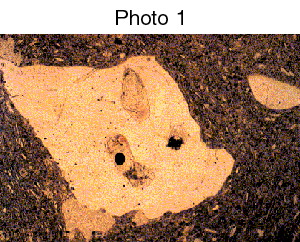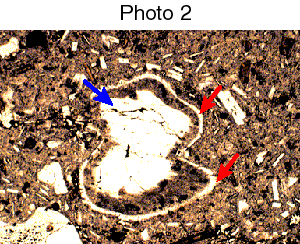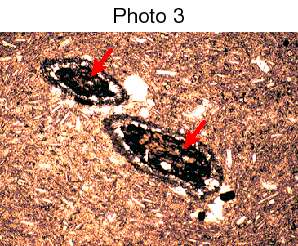 |
 In a magma chamber In a magma chamber
 in the upper crust, in the upper crust,
 the crystallization the crystallization
 of dacite magma of dacite magma
 proceeds at low temperatures. proceeds at low temperatures.
 Minerals so formed are, therefore, Minerals so formed are, therefore,
 stable at such low temperatures. stable at such low temperatures.
 When a hot basaltic magma When a hot basaltic magma
 is newly injected into the chamber, is newly injected into the chamber,
 these minerals are heated these minerals are heated
 and partly melted or, and partly melted or,
 sometimes, completely resolved. sometimes, completely resolved.
 The andecite lava The andecite lava
 explained on the previous page is usually explained on the previous page is usually
 in this state. in this state.
 As seen in the photomicrographs As seen in the photomicrographs
 below (Photo 1, below (Photo 1,
 Photo 2 and Photo 3), Photo 2 and Photo 3),
 the lava extruded the lava extruded
 in the present eruption of Mt. Fugen in the present eruption of Mt. Fugen
 was just of this type. was just of this type.

|

 Top of Part 5
Top of Part 5

 Previous p.
Previous p.

 Next page
Next page
 What type was
What type was
 the 1990-1995 eruption of Mt. Fugen ?
the 1990-1995 eruption of Mt. Fugen ?
 To see this,
To see this,
 we have investigated
we have investigated
 the lava extruded in this eruption
the lava extruded in this eruption
 with a microscope.
with a microscope.
 It has been clarified
It has been clarified
 that the lava was a mixture of
that the lava was a mixture of
 two types of magma
two types of magma
 mixed under the ground.
mixed under the ground.



